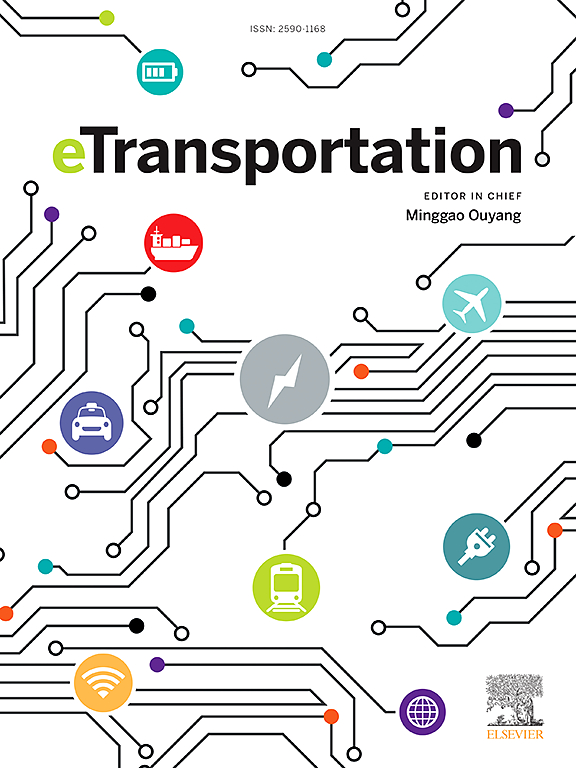Degradation of lithium-ion batteries under automotive-like conditions: P2D model-based understanding and ex-situ validation
IF 17
1区 工程技术
Q1 ENERGY & FUELS
引用次数: 0
Abstract
Despite its worldwide commercialisation, the degradation of lithium-ion battery technology is still a hot research topic. Batteries are known to decrease in capacity and increase in internal resistance, but it is quite uncommon to further investigate the performance decay, distinguishing classes of ageing mechanisms (resistive, kinetic and mass-transport) and relating them with the operation. This work exploits the P2D model to understand the performance decay of ageing cells from a physical perspective. A complex experimental campaign combining 13 different automotive-like cycles, applied to commercial battery samples to recreate the degradation of batteries under realistic conditions, is analysed with such methodology. Along the ageing tests, physical models' parameters are periodically identified by means of particle swarm optimisation applied over characterisation tests. Parameter evolution is then correlated with specific degradation mechanisms, related operating conditions and performance decay. A significant decrease in electrolyte conductivity and lithium solid-state diffusivity within the positive electrode are detected, progressively inducing heterogeneous operation and worsening of both efficiency and capacity retention. Particularly, cycle depth appears to promote particle cracking and loss of positive electrode material. Post-mortem analyses are then performed to support the interpretations on degradation mechanisms, confirming the degradation of electrolyte and positive electrode.

类似汽车条件下锂离子电池的退化:基于P2D模型的理解和非原位验证
尽管锂离子电池在世界范围内已经实现了商业化,但其降解技术仍是一个研究热点。众所周知,电池的容量会减少,内阻会增加,但进一步研究性能衰减、区分老化机制(电阻性、动能和质量传递)的类别并将它们与操作联系起来是相当罕见的。这项工作利用P2D模型从物理角度理解老化细胞的性能衰减。一个复杂的实验活动结合了13种不同的类似汽车的循环,应用于商业电池样品,以重现电池在现实条件下的退化,用这种方法进行了分析。在老化试验过程中,物理模型的参数通过应用于表征试验的粒子群优化方法进行周期性识别。然后将参数演化与特定的退化机制、相关的操作条件和性能衰减相关联。检测到正极内电解质电导率和锂固态扩散率显著下降,逐渐诱导非均匀操作,效率和容量保持都恶化。特别是,循环深度似乎会促进颗粒破裂和正极材料的损失。然后进行尸检分析,以支持对降解机制的解释,确认电解质和正极的降解。
本文章由计算机程序翻译,如有差异,请以英文原文为准。
求助全文
约1分钟内获得全文
求助全文
来源期刊

Etransportation
Engineering-Automotive Engineering
CiteScore
19.80
自引率
12.60%
发文量
57
审稿时长
39 days
期刊介绍:
eTransportation is a scholarly journal that aims to advance knowledge in the field of electric transportation. It focuses on all modes of transportation that utilize electricity as their primary source of energy, including electric vehicles, trains, ships, and aircraft. The journal covers all stages of research, development, and testing of new technologies, systems, and devices related to electrical transportation.
The journal welcomes the use of simulation and analysis tools at the system, transport, or device level. Its primary emphasis is on the study of the electrical and electronic aspects of transportation systems. However, it also considers research on mechanical parts or subsystems of vehicles if there is a clear interaction with electrical or electronic equipment.
Please note that this journal excludes other aspects such as sociological, political, regulatory, or environmental factors from its scope.
 求助内容:
求助内容: 应助结果提醒方式:
应助结果提醒方式:


